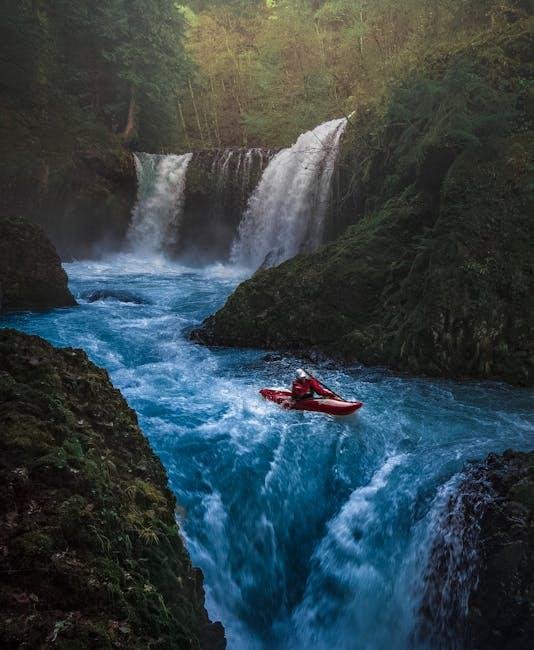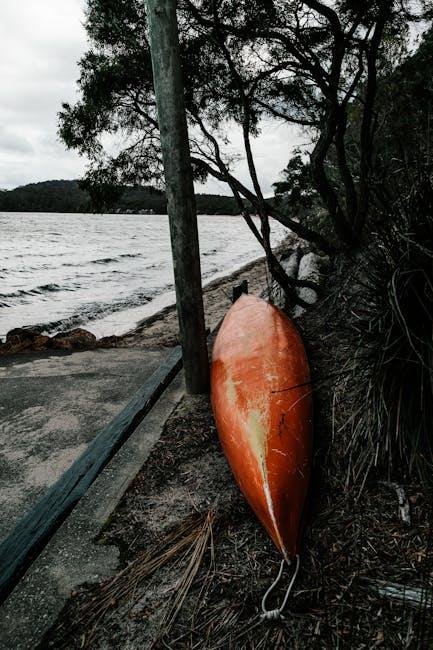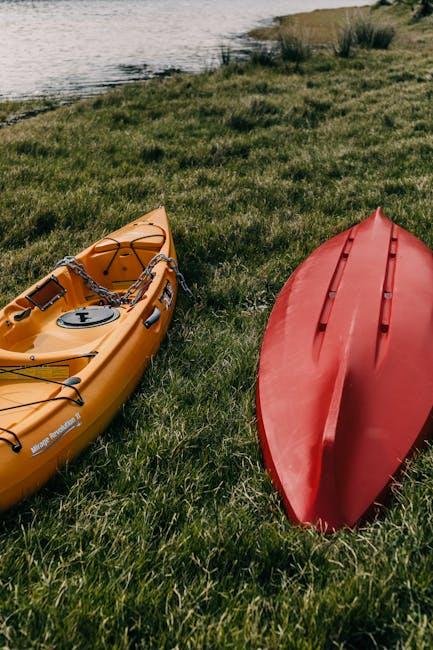Transporting a kayak can often feel like a daunting task, especially for those who are eager to hit the water but unsure of the logistics involved. Weather you’re a seasoned paddler or a curious novice, the thrill of conquering new waterways can quickly be overshadowed by the hassle of getting your kayak from home to the launch site. But fear not! With a little planning and the right techniques, you can transform what might seem like an arduous journey into a seamless part of your kayaking adventure. In this article, we’ll explore practical tips, essential tools, and clever strategies that will empower you to transport your kayak with ease, allowing you to focus on what really matters: enjoying the serenity of the water and embracing the great outdoors. So grab your paddle, and let’s dive into the world of hassle-free kayak transport.
Choosing the Right Kayak Carrier for your Vehicle
When it comes to selecting the ideal kayak carrier for your vehicle, it’s essential to consider a few key factors to ensure a seamless transportation experience. Begin by evaluating the type of vehicle you own, as different carriers will be compatible with various models. Look for options that suit your roof rack setup, such as roof-mounted carriers, hitch-mounted carriers, and truck bed carriers.each type has its advantages, so consider how frequently enough you’ll be transporting your kayak and the ease with which you can load and unload it. Additionally, check the weight capacity of the carrier to ensure it can support your kayak’s size and weight.
Moreover, think about additional features that will make your transportation smoother. Some carriers come with integrated tie-down straps,while others may offer suction cups for added stability during transit. Look for carriers with adjustable arms that can accommodate various kayak shapes and sizes, and those that provide security features to prevent theft while parked. Its always a good idea to read reviews from fellow kayak enthusiasts to gain insights into their experiences with different carriers, helping you make a more informed decision.

Essential Safety Gear and Accessories for Kayak Transport
When it comes to transporting your kayak, having the right safety gear and accessories can transform a stressful endeavor into a seamless experience. Rooftop carriers are essential for those who want to ensure their kayak is securely attached to their vehicle. Look for options that offer adjustable straps and padding to protect your kayak’s surface. In addition, tie-down straps with cam buckles can provide extra security during transit, keeping your kayak in place no matter the road conditions. Don’t forget to invest in a kayak cart, which can make transporting your kayak from your vehicle to the waterS edge more efficient, especially if you have a longer distance to cover.
In addition to these transport essentials, it’s crucial to equip yourself with safety accessories. A set of reflective flags can enhance visibility during transport, especially when traveling on busy roads. Consider also using safety lights for nighttime transport, ensuring that your kayak and vehicle are visible to other drivers. For extra peace of mind, having a first aid kit on hand for both you and your kayaking gear is a smart decision. Lastly, don’t underestimate the value of a sturdy dry bag; it’ll keep your important documents and personal items safe from the elements, ensuring a worry-free adventure once you reach your destination.

Techniques for Securely Tying Down Your Kayak
When it comes to securely tying down your kayak,the right techniques can make all the difference in ensuring a safe and smooth journey. Start by investing in quality tie-down straps that are designed specifically for holding kayaks in place. Look for straps with a strong load capacity and a non-abrasive lining to protect your kayak’s finish. For added security, consider using a combination of bow and stern lines; these not only keep your kayak steady but also prevent it from shifting during transportation. Make sure to weave the straps through the kayak’s handles and secure them tightly on both sides of your vehicle.
Using a set of strategically placed padding can also enhance the stability of your kayak during transit. Placing foam blocks or rubber mats beneath the kayak can prevent movement, absorbing shocks from bumps in the road. Additionally, ensure that the kayak is centered on the roof rack; uneven weight distribution can lead to perilous driving conditions. Below is a simple guideline for setting up your kayak for a worry-free ride:
| Step | Action |
|---|---|
| 1 | Position kayak on roof rack, ensuring balance. |
| 2 | Insert foam blocks or mats for cushioning. |
| 3 | Attach tie-down straps through handles securely. |
| 4 | Add bow and stern lines for extra stability. |
| 5 | Double-check all straps before hitting the road. |

Tips for Navigating Different Terrain with Your Kayak
When kayaking across various terrains, adapting your technique is crucial for safety and efficiency. Navigating rivers, with their currents and eddies, requires a keen awareness of your surroundings. Maintain a low center of gravity and use your paddle to steer effectively away from obstacles. Choose a position that allows for rapid changes in direction while ensuring a firm grip on the paddle. On the other hand, if you’re tackling open water, pay attention to the wind and waves; utilize a forward stroke that promotes stability and minimize lateral movements to avoid capsizing.
For those exploring shorelines and marshy areas, lightweight kayaks can make all the difference. Opt for designs that allow for easy transport over land when you need to portage between water bodies. Ensure your kayak is equipped with padding and grips for a secure hold, making the transition smoother.Here is a speedy comparison of terrains and their requirements:
| Terrain Type | Key Consideration | Recommended Techniques |
|---|---|---|
| Rivers | Currents | Low center of gravity, quick adjustments |
| Open Water | waves and Wind | Forward strokes, minimize lateral movement |
| Shorelines | Portaging | Lightweight kayaks, secure grips |
The Conclusion
As you embark on your kayaking adventures, the journey from home to water shouldn’t be a challenge in itself. With the insights shared in this guide, transporting your kayak can be a breeze, allowing you to focus on what truly matters: the thrill of paddling and the serenity of nature. Whether you opt for a roof rack, a trailer, or a simple carry system, remember that preparation is key to a smooth transition. So, gather your gear, secure your vessel, and set forth with confidence. The open waters await you—may each trip bring you unforgettable moments and a deeper connection to the great outdoors! Happy paddling!
